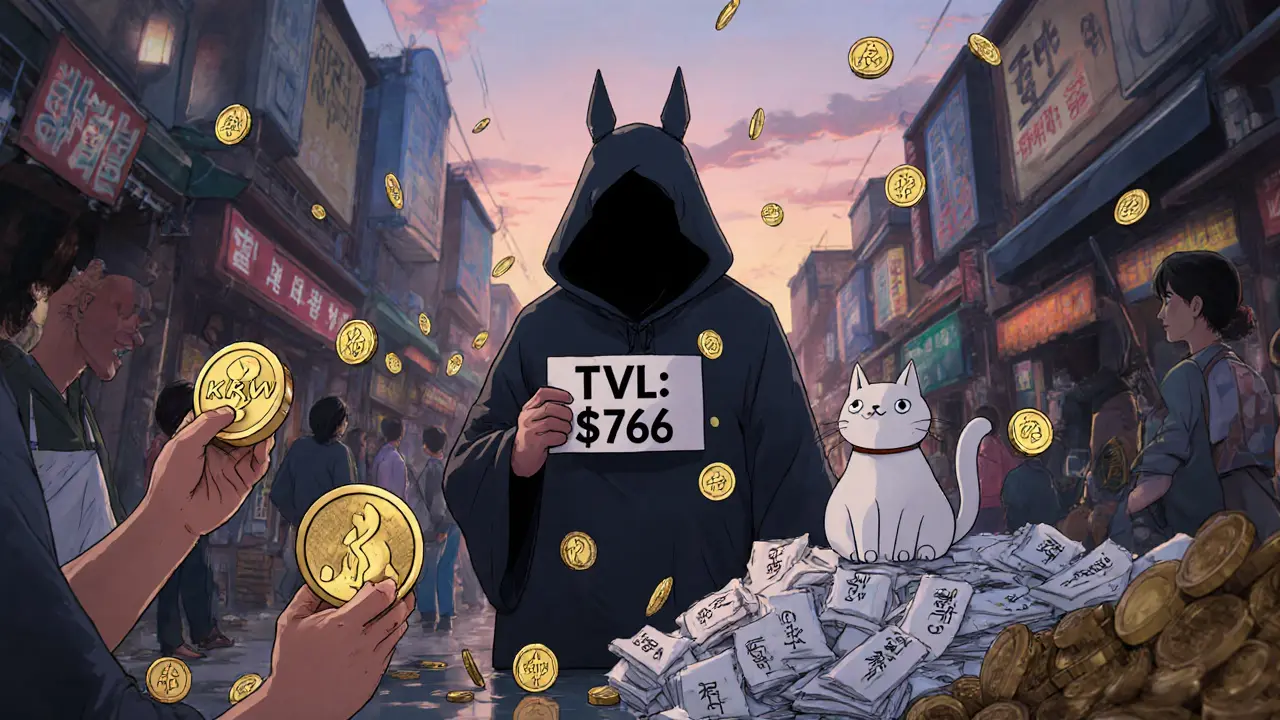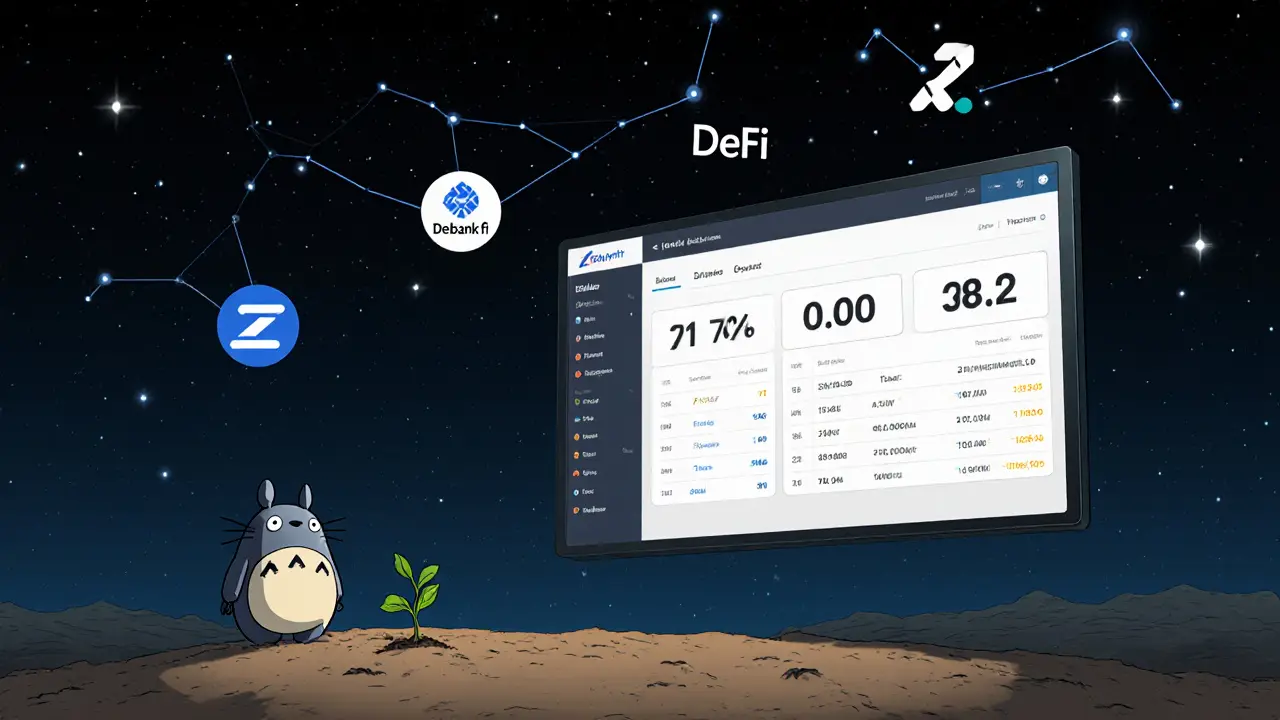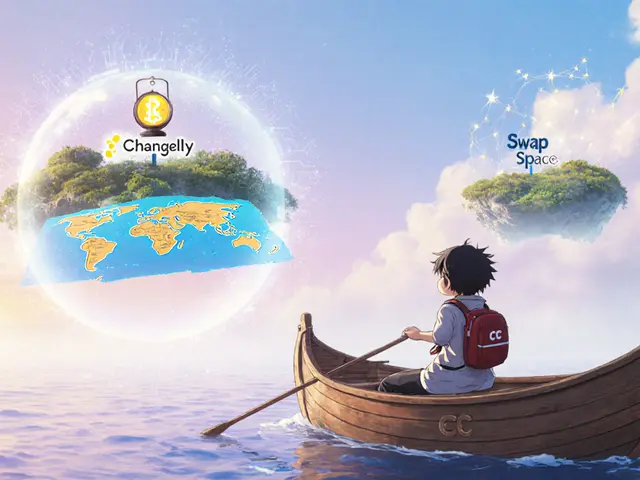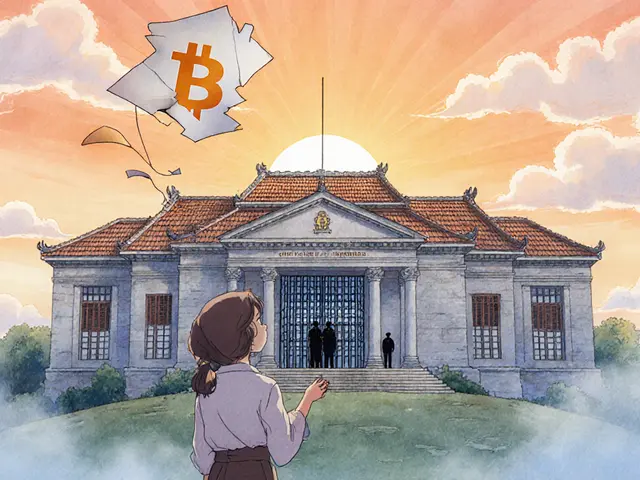DeFi Project Health Checker
Evaluate DeFi Project Legitimacy
This tool helps you assess if a DeFi project has real utility by analyzing key metrics. Based on factors discussed in the KingDeFi (KRW) analysis article.
Important: Real DeFi projects should have consistent data, active development, and meaningful user engagement. Projects with low TVL, inconsistent market data, and no community activity are often speculative tokens.
Enter Project Metrics
Provide the following key metrics to evaluate the project's health:
Project Health Assessment
What Your Score Means
Healthy DeFi Project
Moderate Activity
High Risk - Likely Speculative
Projects like KingDeFi (KRW) typically score very low because they have low TVL, low user count, inconsistent data, and symbol conflicts. Healthy DeFi projects like DeBank and Uniswap have consistent data across platforms and TVL in the millions or billions of dollars.
KingDeFi (KRW) sounds like a serious DeFi project. It claims to help users optimize yields, track liquidity pools, and earn rewards across Binance Smart Chain and Solana. But if you look past the buzzwords, you’ll find a token with almost no real usage - just trading volume and confusion.
What is KingDeFi (KRW)?
KingDeFi is a cryptocurrency with the ticker symbol KRW. It was launched as a DeFi tool meant to help users find the best yield farming opportunities. The idea was simple: plug in your crypto holdings, and KingDeFi would tell you where to stake for the highest returns. Sounds useful, right? But here’s the catch - there’s no evidence anyone actually uses it for that.
The token operates on two blockchains: Binance Smart Chain and Solana. That’s not unusual. Many DeFi projects support multiple chains to reach more users. But unlike projects like DeBank or Zapper.fi, which have millions in total value locked (TVL) and thousands of active users, KingDeFi’s TVL is $766 as of November 2025. That’s less than the cost of a good pair of sneakers. For comparison, DeBank handles over $850 million in TVL. KingDeFi doesn’t even register as a blip on the radar.
The KRW symbol problem
KingDeFi uses KRW as its ticker. That’s the same code as the South Korean Won - the official currency of South Korea, recognized by the International Organization for Standardization (ISO 4217). This isn’t a mistake. It’s intentional branding, but it causes real problems.
Traders on some exchanges accidentally buy KRW (the currency) when they mean to buy KRW (the token). There are reports from users on Telegram and P2P forums about funds being sent to the wrong wallet because of this confusion. Exchanges don’t always distinguish between the two, and there’s no official fix from KingDeFi’s team. If you’re trading crypto and see KRW, you have to stop and double-check - and that’s a red flag for any serious project.
Market data doesn’t add up
The numbers around KingDeFi are messy. CoinMarketCap, Coinbase, and Bitget all report different values for the same metrics.
- Price: Around $0.00068 - down 85% from its all-time high of $0.0050 in August 2021.
- Circulating supply: 9.82 billion tokens - that’s a massive amount.
- Market cap: Coinbase says $0.00. CoinMarketCap says $0. Even though the price and supply are clearly listed, the math doesn’t work on their end.
- 24-hour trading volume: $12.3 million on CoinMarketCap, but only $6.3 million on Bitget. That kind of inconsistency shouldn’t happen with a real platform.
When market data is this unreliable, it’s not a technical glitch. It’s a sign the project isn’t being taken seriously by data providers. Most legitimate tokens have clean, consistent reporting across all major platforms. KingDeFi doesn’t.

Who’s using it?
There are only 7,030 token holders according to CoinMarketCap. That’s fewer than the number of people who attend a small local crypto meetup. Compare that to Uniswap, which has over 850,000 users, or Aave with 1.2 million. If KingDeFi was actually helping people earn yield, you’d see active wallets, user guides, Discord discussions, and YouTube tutorials. You don’t.
Search Reddit for KingDeFi. Nothing. Twitter? A few low-engagement pump posts. Trustpilot? No reviews. GitHub? No repository found. No developer activity. No documentation. No wallet integration guides. No smart contract audits published. If this were a real DeFi tool, you’d find all of that. You don’t.
It’s not DeFi - it’s a speculative token
KingDeFi’s $12 million daily trading volume looks impressive until you realize it’s not coming from people using the platform. It’s coming from traders buying and selling the token on exchanges like KuCoin, Gate.io, and Bitget.
Real DeFi projects thrive on usage. Users lock up their crypto to earn rewards. That’s what TVL measures. KingDeFi’s TVL is $766. That’s not a platform - that’s a placeholder. Meanwhile, the token trades like a meme coin. People buy it hoping the price will spike, then sell fast. No one’s farming yields. No one’s using the analytics dashboard. The project’s core features might as well not exist.
Industry analysts like David Han from the Blockchain Research Institute have pointed out that tokens with KRW symbol confusion and TVL under $1,000 are almost always meme coins disguised as infrastructure. KingDeFi fits that pattern perfectly.

Why does it still exist?
Because there’s still a market for low-cap tokens with high volatility. Retail traders chase quick pumps. Exchanges list them because they bring trading volume. And as long as people keep buying, the token stays alive - even if the project is dead.
KingDeFi hasn’t released a roadmap update in years. No new features. No partnerships. No team announcements. The last major price movement was in 2021. Since then, it’s been a slow fade. Messari’s DeFi Health Report from November 2025 classifies projects like this - low TVL, low community, no development - as “high probability abandonware.” That’s a fancy way of saying: it’s already gone.
Should you buy KingDeFi (KRW)?
Only if you’re okay with gambling.
If you’re looking for a DeFi tool to earn passive income, KingDeFi is not it. You won’t find reliable yields. You won’t find support. You won’t find a working platform. All you’ll find is a token with a confusing symbol, inconsistent data, and zero real utility.
If you’re a speculator chasing short-term pumps, you might consider it - but treat it like a lottery ticket. Never invest more than you’re willing to lose. And be ready for it to drop to zero at any moment. There’s no safety net. No team to fix things. No community to rally behind.
There are dozens of better alternatives: DeBank for tracking your DeFi portfolio, Zapper.fi for yield optimization, or even Solana-based tools like Phantom Wallet with integrated staking. They’re real. They’re used. They’re audited. KingDeFi isn’t any of those things.
Final thoughts
KingDeFi (KRW) isn’t a DeFi project. It’s a token with a misleading name, zero real-world use, and a symbol that causes real trading errors. Its price is low because it has no value beyond speculation. Its trading volume is high because people are gambling on it - not using it.
The DeFi space is full of innovation. Projects like Aave, Compound, and Curve are building real financial tools. KingDeFi is just noise. Don’t confuse volume for validity. Don’t mistake a ticker symbol for a product. And never assume a coin is useful just because it says it is.
If you’re looking for DeFi, go where the users are. Not where the tickers sound like money.






0 Comments